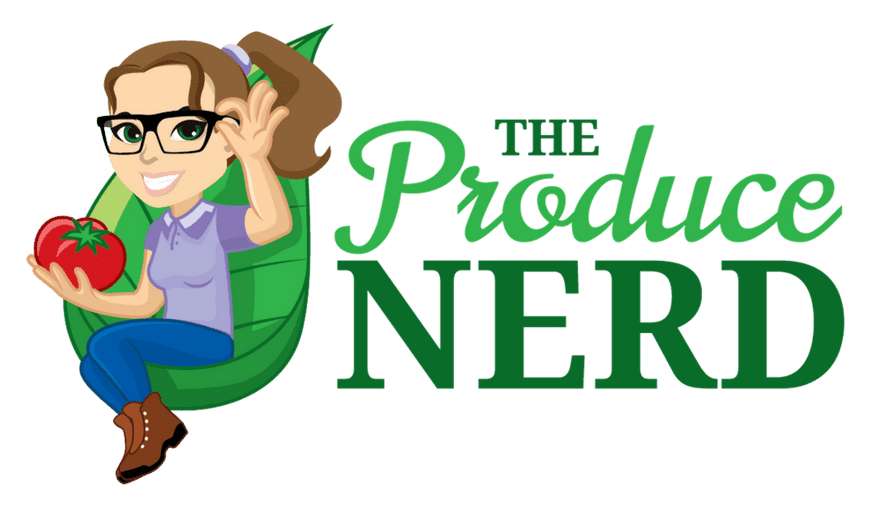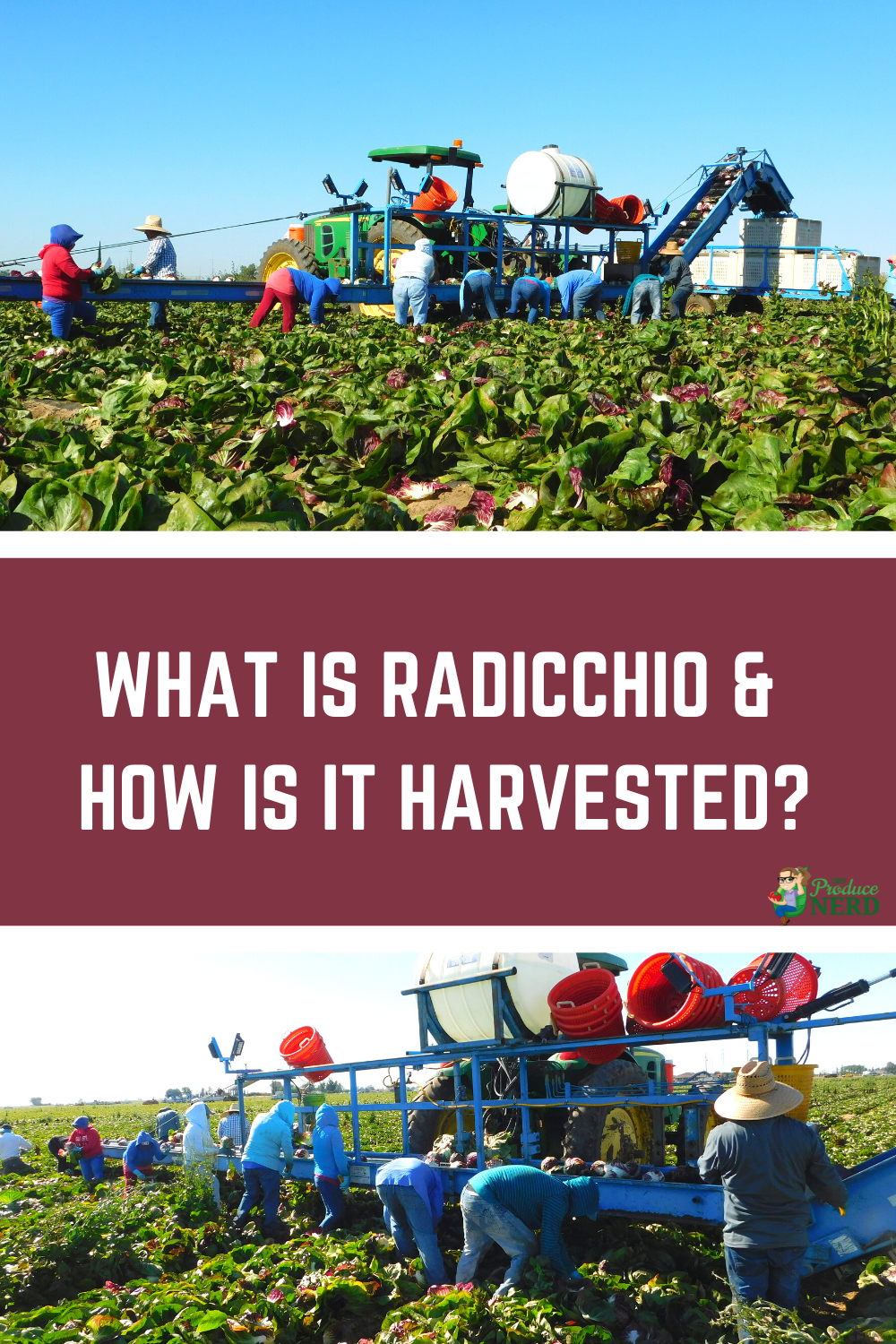Radicchio is a beautiful member of the leafy green family! It can be found as part of salad mixes, or sold as individual heads. I recently visited J. Marchini Farms in Merced, CA to see their radicchio harvest. It was an extra special site to see, as there were six harvest crews working on six different harvesting rigs in the same field at the same time! It is common to have a few in the same field at the same time, but not six!
Table of Contents
Is Radicchio Lettuce?
No, radicchio is technically not lettuce. This is because radicchio is a member of the chicory family, along with Belgian endive, Blonde Frisée and escarole, among others.
Radicchio Maturity
Due to the weather fluctuations this year, growers have had to watch their fields closely to see how quickly the product is maturing. For radicchio, if the crop is not harvested when it reaches maturity, it becomes unsaleable. When radicchio starts to over-mature, the stalk grows up the middle of the plant and almost resembles a Brussels sprout. I think it is fascinating and beautiful all at the same time! However, this no longer meets customer specifications.
When is Radicchio Ready to be Harvested?
When harvesting, the workers are checking to make sure that the heads of radicchio are not over-mature and that they are firm, tight heads. When the radicchio starts to over-mature, the white “seeder” that can be observed when you cut the radicchio in half, extends throughout the length of the radicchio head. In the pictures below, you can see a head that is the correct maturity on the left, and one that is over-mature on the right.
Radicchio Harvest
Radicchio is harvested in the field and is then sent to a packinghouse for further handling. The harvesting process is as follows:
- Radicchio is harvested using harvesting equipment that moves along with the workers in the field.
- The workers remove the heads using a knife. While doing this, they check the quality and maturity and make the cut, as well as remove a portion of the outer leaves.
- The heads are placed on the conveyor belt on the harvesting rig.
- The heads continue on the conveyor until they drop into bins that are located on an adjacent trailer. Workers at this final step help direct the heads into the bins, and also remove any damaged heads.
- Once the bins on the adjacent trailers fill up, the trailers exit the field and head for the packinghouse. There is another trailer waiting to take its place in the field.
When the product is removed from the field, it is taken to a packinghouse. At the packinghouse, workers remove additional outer leaves and make another cut to the initial harvest cut for appearance purposes. The product is then packed and cooled until further transport.
By the time it reaches the grocery store, we either see it as purple radicchio heads or mixed in with other leafy greens as part of a salad mix. It is a lot more common than you think to see radicchio as part of ready-to-eat packaged salad mixes!
Radicchio Harvesting Video
The video below details a step-by-step overview of the harvesting process.
Food Safety Considerations
For a radicchio harvesting operation, some of the main food safety concerns are:
- Cleaning and Sanitation of the harvesting knives – Cleaning and sanitizing of the knives needs to occur on a regular and frequent basis. In addition to this being on a schedule and controlled by the company, there also needs to be a knife dip to store the knives in while the workers are on break.
- Glove policy – Since gloves are required, there needs to be a glove policy enforced. This means that the gloves are controlled by the company, and that they are either disposable or able to be washed, and are changed out appropriately. If the gloves are washed, the company needs to control the cleaning of the gloves.
- Cleaning and Sanitation of the conveyor line – Every piece of harvested product touches the conveyor line between being harvested and sent to the bins, so it needs to be cleaned and sanitized to prevent any potential cross-contamination issues to the product.
There are many more items to be taken into consideration, but this is just a brief list to get you thinking about it!
Postharvest Considerations
The most important postharvest factor is quickly cooling the radicchio near 0°C/32°F and maintaining that temperature throughout the cold chain.
Frequently Asked Questions
What does radicchio look like as it is growing?
It looks like a bunch of loose green leaves, with a darker inside color. However, once radicchio is harvested and the outer leaves are trimmed, it does look significantly different.
What is the difference between radicchio and radicchio rosa?
Radicchio rosa is pink and the heads of radicchio rosa are a lot looser when harvested. Traditional radicchio is a maroon color, and the heads are firm when harvested.
When is radicchio in season?
Radicchio is in season all year-round.
Featured Grower Information
I would like to thank J. Marchini Farms for the tour and for allowing the gathered content to be shared. J. Marchini Farms is located in California’s San Joaquin Valley, where they grow radicchio, treviso, figs, fennel and a bunch of other vegetables that they label under Italian specialties! For more on how to best enjoy radicchio, you can see J. Marchini Farms’ radicchio recipe book.
You can also see more of their products and growing operations, featured here: fresh figs and fennel, as well as their input to the How to Select and Store Radicchio post.
If you enjoyed this post, you might also like:


Pingback: How to Select, Store & Prepare Radicchio - The Produce Nerd